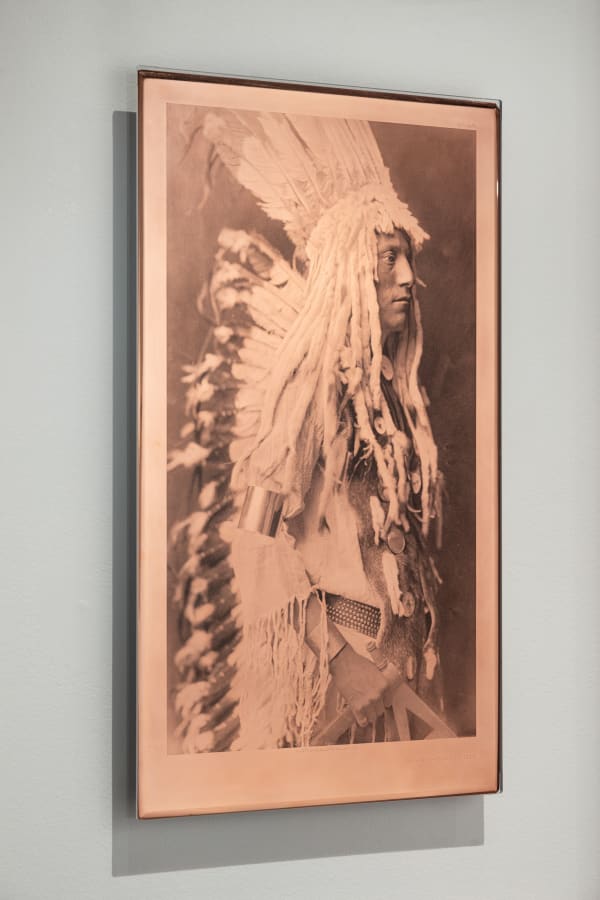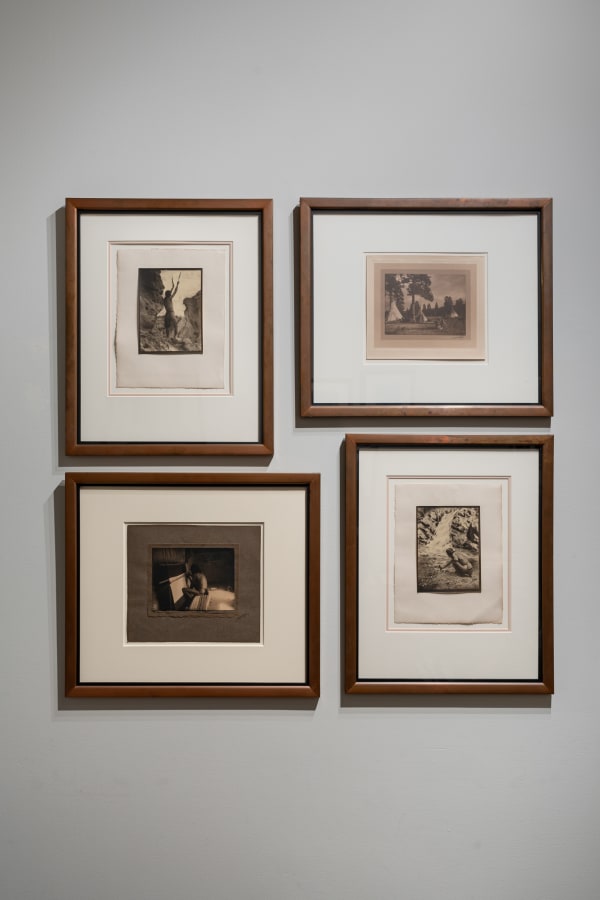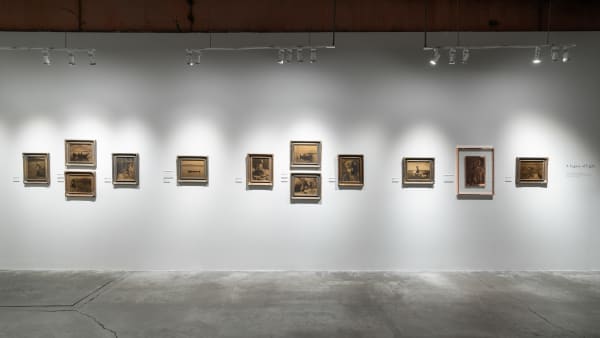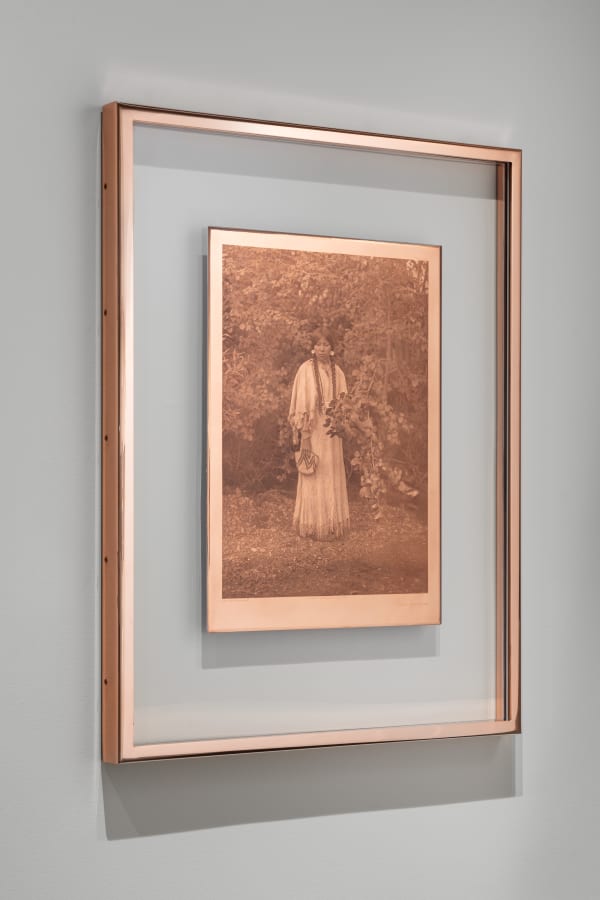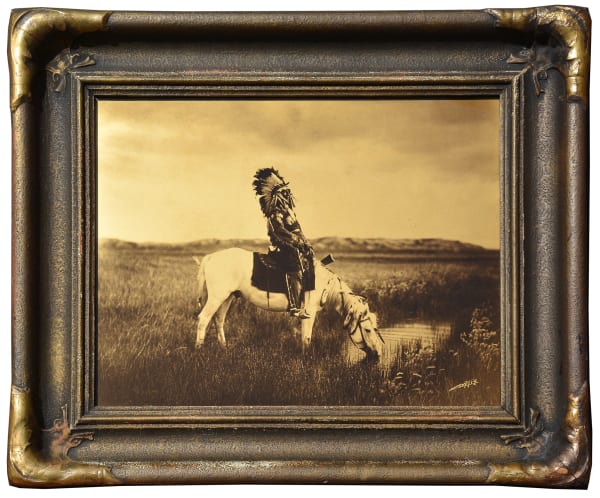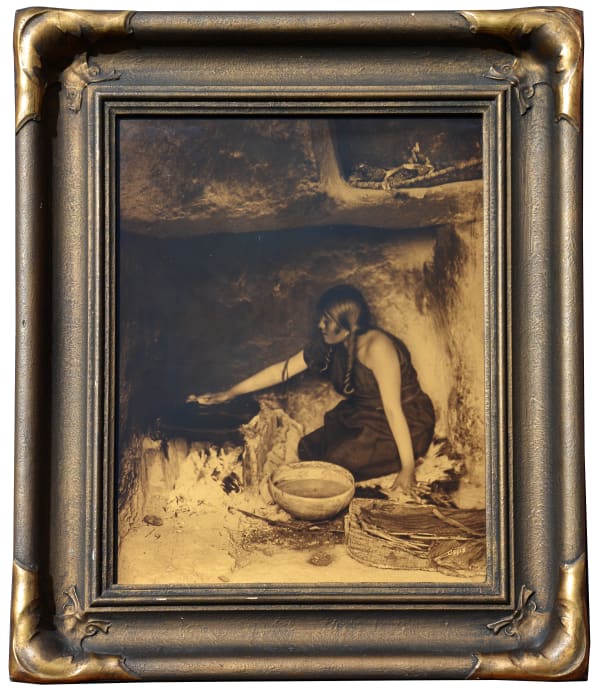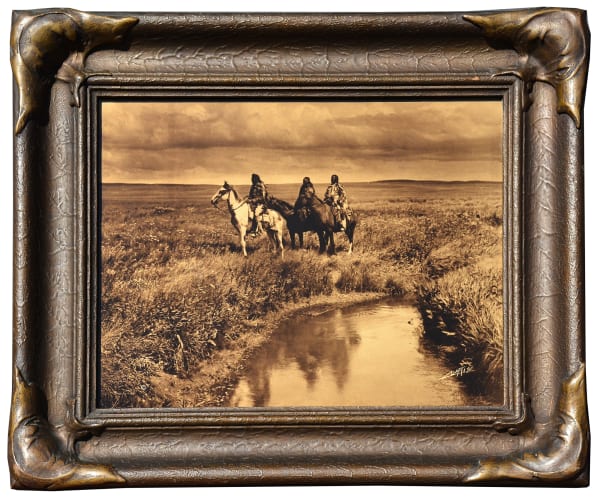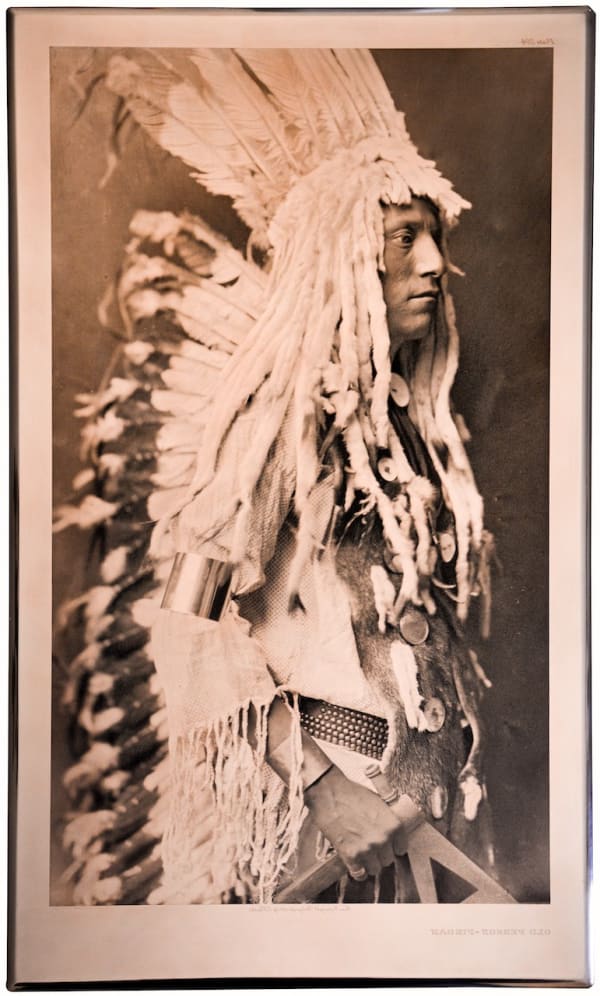A Legacy of Light: Edward S. Curtis
THE GOLDTONE PRINTS AND COPPER PHOTOGRAVURE PRINTING PLATES OF EDWARD S. CURTIS
Reception & Conversation with Bruce Kapson and Dan Solomon:
Sat. May 11th , 3:00 pm – 6:00 pm (RSVP Required)
-
 Edward S. Curtis, An Oasis In The Badlands, 1905
Edward S. Curtis, An Oasis In The Badlands, 1905 -
 Edward S. Curtis, Curtis Family Reunion – Vancouver Island , 1914
Edward S. Curtis, Curtis Family Reunion – Vancouver Island , 1914 -
 Edward S. Curtis, Homeward, 1898
Edward S. Curtis, Homeward, 1898 -
 Edward S. Curtis, Son Of The Desert – Navaho, 1904
Edward S. Curtis, Son Of The Desert – Navaho, 1904 -
 Edward S. Curtis, The Potter (Nampeyo) – Hopi, 1905
Edward S. Curtis, The Potter (Nampeyo) – Hopi, 1905 -
 Edward S. Curtis, The Piki Maker, 1906
Edward S. Curtis, The Piki Maker, 1906 -
 Edward S. Curtis, The Three Chiefs – Piegan, 1900
Edward S. Curtis, The Three Chiefs – Piegan, 1900 -
 Edward S. Curtis, The Rush Gatherer – Kutenai, 1910
Edward S. Curtis, The Rush Gatherer – Kutenai, 1910 -
 Edward S. Curtis, Horse Capture - Atsina, Portfolio 5, Plate 170, from The North American Indian, 1908
Edward S. Curtis, Horse Capture - Atsina, Portfolio 5, Plate 170, from The North American Indian, 1908 -
 Edward S. Curtis, In The Land Of The Sioux, Portfolio 3, Plate 95, from The North American Indian, 1905
Edward S. Curtis, In The Land Of The Sioux, Portfolio 3, Plate 95, from The North American Indian, 1905 -
 Edward S. Curtis, Nespilim Girl, Portfolio 7, Plate 246, from The North American Indian, 1905
Edward S. Curtis, Nespilim Girl, Portfolio 7, Plate 246, from The North American Indian, 1905 -
 Edward S. Curtis, Old Person - Piegan Portfolio 6, Plate 204, from The North American Indian, 1911
Edward S. Curtis, Old Person - Piegan Portfolio 6, Plate 204, from The North American Indian, 1911 -
 Edward S. Curtis, Ready For The Charge Portfolio 4, Plate 125, from The North American Indian, 1908
Edward S. Curtis, Ready For The Charge Portfolio 4, Plate 125, from The North American Indian, 1908 -
 Edward S. Curtis, The Lookout – Apsaroke, Volume 6, from The North American Indian, 1905
Edward S. Curtis, The Lookout – Apsaroke, Volume 6, from The North American Indian, 1905 -
 Edward S. Curtis, White Man Runs Him, Volume 3, from The North American Indian, 1908
Edward S. Curtis, White Man Runs Him, Volume 3, from The North American Indian, 1908 -
 Edward S. Curtis, Offering The Buffalo Skull – Mandan, Volume 5, from The North American Indian, 1908
Edward S. Curtis, Offering The Buffalo Skull – Mandan, Volume 5, from The North American Indian, 1908 -
 Edward S. Curtis, Ready For The Charge, Portfolio 4, Plate 125, from The North American Indian, 1908
Edward S. Curtis, Ready For The Charge, Portfolio 4, Plate 125, from The North American Indian, 1908
For the first time, the show unites two never-before-exhibited private collections of two very distinct, yet complimentary Curtis vintage photographic mediums. The works are renowned for their unparalleled brilliance, luminosity, and three-dimensional quality. The exhibition features a group of 16 vintage Goldtones, including 14 from the prestigious Kale Family Collection, representing the world’s foremost assortment of Goldtones available for acquisition. Among these is a newly discovered and previously unknown 1914 Goldtone print of Curtis together with his family on an outing during his filming of In The Land Of The Head Hunters on Vancouver Island. The extraordinary rarity of this piece elevates it to the most significant Goldtone ever to appear on the market. The print is re-produced in the recently published and extensive monograph, "Edward S. Curtis, Printing the Legends: Looking at Shadows in a West Lit Only by Fire” (2024) by Dr. Larry Len Peterson.
Complimenting this exceptional Goldtone collection are 10 exquisite, original Copper Photogravure Printing Plates from gallerist Bruce Kapson’s private collection. Each plate is a unique work and a primary document of one of the most significant publishing ventures of the 20th century, Curtis’s magnum opus The North American Indian. They are the source of origin for every vintage Curtis photogravure print extant. The light reflecting off the engraved copper plates adds a three-dimensional quality to the images, presented in their original copper-and-inked state. All are iconic, are in pristine condition and are among the very last of such Copper Plates remaining outside of institutional or private collections.
Edward Sheriff Curtis (b.1868, d.1952) ranks among the most important photographers of the 20th century and is a pinnacle figure in photography representing the American West. His oeuvre is distinguished as an incredible artistic creation as well as an important historical document of indigenous peoples and their diverse cultures. For three-plus decades beginning in 1898 and ending in 1930, Curtis produced images of over 80 tribes from the deserts of Southern California to the Arctic that not only record traditional lifeways but also convey a dignity, universal humanity, and majesty that eclipse all other work made portraying Native Americans of the period. He was the first photographer to involve Native Americans as active participants and contributing collaborators in the making of their image, dedicating his life to the preservation of their cultural traditions and languages. Utilizing his talent and knowledge of artistic developments in the photographic medium, Curtis depicted Indigenous Americans with a mastery of pictorial style and technique rivaled only by the most elegant prints of Edward Steichen and Alfred Stieglitz. In his photographs, we see images that are unique within and indeed transcend the world of photography.
George Horse Capture, the late noted curator, anthropologist, writer, American Indian activist, and member of the Gros Ventre Tribe reflected on Curtis's impact in a 2004 conversation with Bruce Kapson at the Braun Research Library, Southwest Museum, Los Angeles: “My great-grandfather always draws me toward Curtis (the copper plate of his great-grandfather’s portrait, Horse Capture-Atsina, is included in the exhibit). Curtis’s work offers whites a window on the world they want to know more about, and gives Native Americans information on their own ancestors, which they are glad to have.”
For inquiries or a preview of works included in the exhibition, please contact info@marshallgallery.art.




